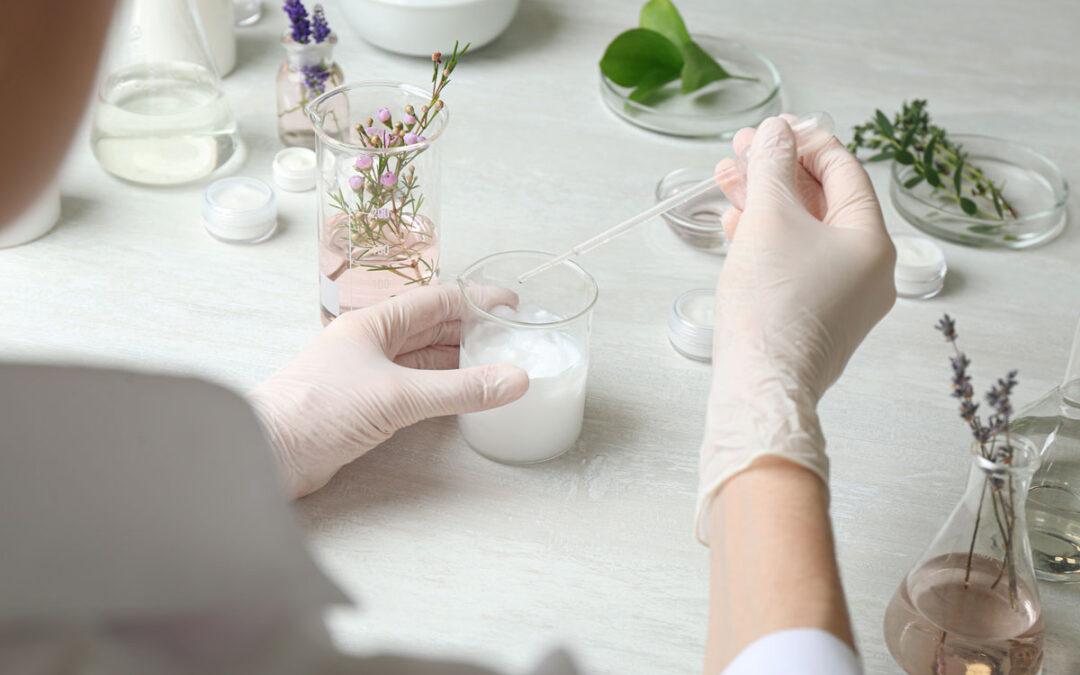In the shifting landscape of the B2B cosmetic industry, innovation and sustainability have become the chief elements that are sharply directing industry’s development. In other words, changes in consumer’s collective thinking, makes it not only attractive for firms but also for the environment. Thus this article examines the symbiosis between innovation and sustainability in B2B cosmetics, and how companies are trying to find their way in this dynamic industry.
Redefining Product Innovation
Companies are revising recipes and trimming the costs to secure natural, bio, and ethically sourced ingredients at the top of the priority list. In addition to natural and organic products, there is a growing trend of using ingredients that have been obtained fairly. That goes to implementing fair labor rules, respect for the rights of local communities, and actively working on increasing the biodiversity conservation of the area.
More so, recent biotechnology and green chemistry developments are changing component harvesting production techniques. Biotechnology is the main force behind innovation in how ingredients are sourced and produced. Using biotechnology, firms could get active compounds like peptides and antioxidants cultivated within an environment.
Besides, partnerships with suppliers with sustainable food practices are creating a more open, championed supply chain system. Also, partnerships emphasizing eco-friendly methods are key to transforming a responsible and transparent supply chain. B2B cosmetic companies are proactively engaging with suppliers who are in the same boat as them in the matter of sustainability, and they are doing very strict assessments to ensure that suppliers are in line with the ethical, environmental, and social criteria.
Packaging Revolution
The move towards sustainable packaging solutions is getting more and more popular, with a focus on recycling, biodegradability, and refillable packaging options. As more sustainable options arise, the days of “once use, discard” containers are becoming a thing of the past.
The future may well be held in the innovativeness of compostable materials, algae-based plastics, and mushroom packaging, which could be the ingredients for creating a cleaner, healthier ecosystem. On the other hand, instead of discarding containers after each use, reusing them is becoming more and more popular nowadays.
By selling refillable cosmetics, the brands will inspire their customers to employ the same package, which helps control the amount of waste they produce. Entrepreneurs in this style have embraced the objectives of the circular economy. Such design strategies result in material savings and reduce the supply chain’s carbon footprint from start to end.
Energy-Efficient Manufacturing
Cosmetics companies are putting their money into renewable energy sources and energy-efficient technologies to reduce greenhouse gas emissions in the production phase.
The classical gas turbine exhibits superior performance, saves energy consumption, benefits from optimization methods, and recovers waste energy.
The eco way of thinking about production technologies, like water recycling and solvent recovery, is almost always environmentally beneficial and cost-effective.
Circular Economy Initiatives
B2B offers to the atmosphere of the circular economy an advantage of reducing waste reduction and maximizing the efficiency of the resources.
There has been a tendency where raw materials necessary for packaging are recycled and reused within the supply chain.
Product recovery programs and collaborations with recycling companies endorse the retrieval and use of recycled cosmetic materials.
Transparency and Accountability
The consumer demand for transparency is influencing firms to give dented information about the products’ ingredients, product origin, and the product’s environmental impact.
Certifications and external checks are the tools to ensure transparency and credibility of the environmental statements.
Stakeholder engagement and accountability reporting process make partners accountable while enabling sustainable performance to grow continuously.
Consumer Education and Engagement
Worldwide, B2B cosmetic companies are creating consumer awareness through online campaigns and initiatives to increase sustainability.
Clear and fair communications on standards of sustainability and effect are crucial for consumers to understand and make the right choices. The collaboration and feedback channels platforms promote dialogue and co-creation.
Regulatory Landscape and Standards
The growing regulations and the increased cooperation standards are molding the path for sustainable innovation in cosmetics B2B. Responsible B2B cosmetic brands offer various educational programs and activities to consumers involved in the sustainable fashion movement to improve customer knowledge and create meaningful awareness of sustainability issues.
Regarding the most specific details for the financial profit, compliance with all the rules regulating the safety of ingredients and environmental impact is the priority for all the market participants. The proactive partnership between policymakers and industry associations is the key to formulating forward-looking policies and standards to ensure the industry’s sustainability.
Finally, in modern B2B cosmetic material, the live morpheme of the two concepts is present. With green innovation starting to gain the production of eco-friendly goods, companies can align their activities with the changed requirements of consumers and simultaneously have a sustainable future. Through the efforts to make it transparent, accountable, and collaborative, it is possible to change the standards of excellence and lead the way to a cleaner and more responsible future.








